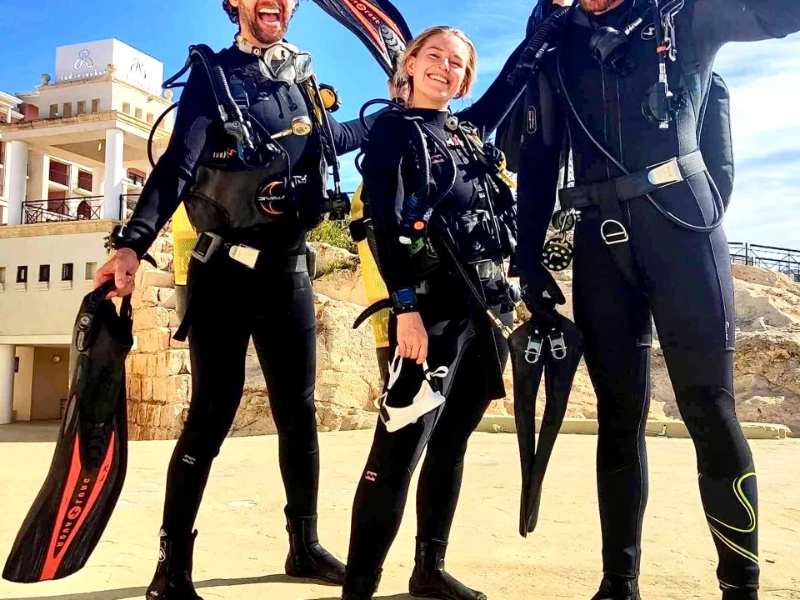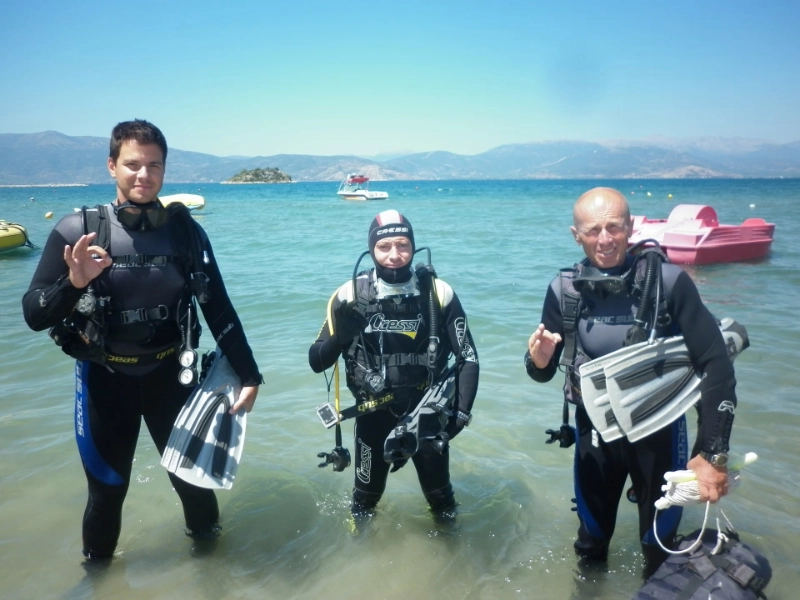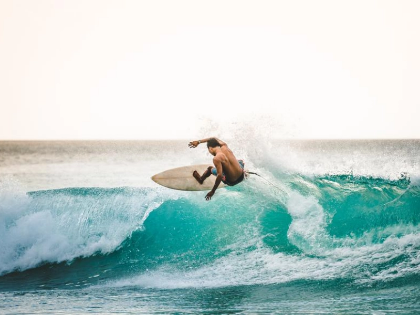Selecting the Proper Fins to Optimise Performance Below the Surface
The fins you choose might have a major impact on your underwater experience. With each kick, the perfect combination may take you into deep waters and coral reefs with ease, adding to the adventure. Numerous considerations need to be taken into account while selecting the ideal pair, such as your preferred diving style, budget, material composition, size requirements, and customer reviews. It can be difficult to choose the best fins because there are so many possibilities.
Inhaling

Sufficient Buoyancy
 Fin selection is crucial for optimising thrust efficiency, taking into account both your intended application and ability. Thrust efficiency, which is determined by balancing kick cycle speed and power, is the measure of how much (muscular) energy you must expend to move your body over water resistance.
Efficiency of a fin is also influenced by the blade's form. For instance, a longer, thinner blade minimises drag by reducing water resistance over a larger surface area, yet a more rounded aspect at the fin's tip encourages smoother turns.
Additional design components that support fin efficiency are as follows:
Fin selection is crucial for optimising thrust efficiency, taking into account both your intended application and ability. Thrust efficiency, which is determined by balancing kick cycle speed and power, is the measure of how much (muscular) energy you must expend to move your body over water resistance.
Efficiency of a fin is also influenced by the blade's form. For instance, a longer, thinner blade minimises drag by reducing water resistance over a larger surface area, yet a more rounded aspect at the fin's tip encourages smoother turns.
Additional design components that support fin efficiency are as follows:
Effectiveness
 Your effectiveness underwater will depend on the kind of fin you select for freediving, scuba diving, or snorkelling. Selecting the appropriate pair can result in fewer strokes and energy expenditure, increasing swimming time and enjoyment!
Angled blade designs are found in some of the greatest fins. This lessens resistance when you kick. They also take up less room in a bag and are less likely to cause you to fall or stub them on something when you pack them away because you can just put them in there without having to bend them.
There are fins with channels built into the blades that are intended to work similarly to a boat propeller. For more experienced divers who want to improve their speed and force, they are a fantastic choice. Additionally, they are typically more costly and heavier, but for scuba divers who value their efficiency, the investment is well worth it.
Your effectiveness underwater will depend on the kind of fin you select for freediving, scuba diving, or snorkelling. Selecting the appropriate pair can result in fewer strokes and energy expenditure, increasing swimming time and enjoyment!
Angled blade designs are found in some of the greatest fins. This lessens resistance when you kick. They also take up less room in a bag and are less likely to cause you to fall or stub them on something when you pack them away because you can just put them in there without having to bend them.
There are fins with channels built into the blades that are intended to work similarly to a boat propeller. For more experienced divers who want to improve their speed and force, they are a fantastic choice. Additionally, they are typically more costly and heavier, but for scuba divers who value their efficiency, the investment is well worth it.
Cosiness
 After a lengthy dive, the last thing you want is for your feet to hurt and feel uncomfortable. You might feel less competent and enjoy your diving as a result of this.
The greatest fins will be pleasant to wear and will fit your feet properly. It's critical that they fall somewhere in the middle, neither too tight nor too loose.
Visiting the fin area of your local dive shop is an excellent method to get a feel for the kind of fins that will fit you. They are frequently stacked floor to ceiling with a variety of fins that come in all sizes and forms. Some even have unique features like splits, perforations, and channels that change the fin's capacity for hydrodynamics. It should be mentioned nonetheless that technical divers and their exacting needs are typically better suited for this kind of fin. Additionally, you could be tempted to spend extra money on a pair of fins that have particular qualities, but this isn't always the case. In fact, a well-made pair of fins will outperform a much more expensive set, according to an article in the Underwater & Hyperbaric Medicine Journal.
After a lengthy dive, the last thing you want is for your feet to hurt and feel uncomfortable. You might feel less competent and enjoy your diving as a result of this.
The greatest fins will be pleasant to wear and will fit your feet properly. It's critical that they fall somewhere in the middle, neither too tight nor too loose.
Visiting the fin area of your local dive shop is an excellent method to get a feel for the kind of fins that will fit you. They are frequently stacked floor to ceiling with a variety of fins that come in all sizes and forms. Some even have unique features like splits, perforations, and channels that change the fin's capacity for hydrodynamics. It should be mentioned nonetheless that technical divers and their exacting needs are typically better suited for this kind of fin. Additionally, you could be tempted to spend extra money on a pair of fins that have particular qualities, but this isn't always the case. In fact, a well-made pair of fins will outperform a much more expensive set, according to an article in the Underwater & Hyperbaric Medicine Journal.










